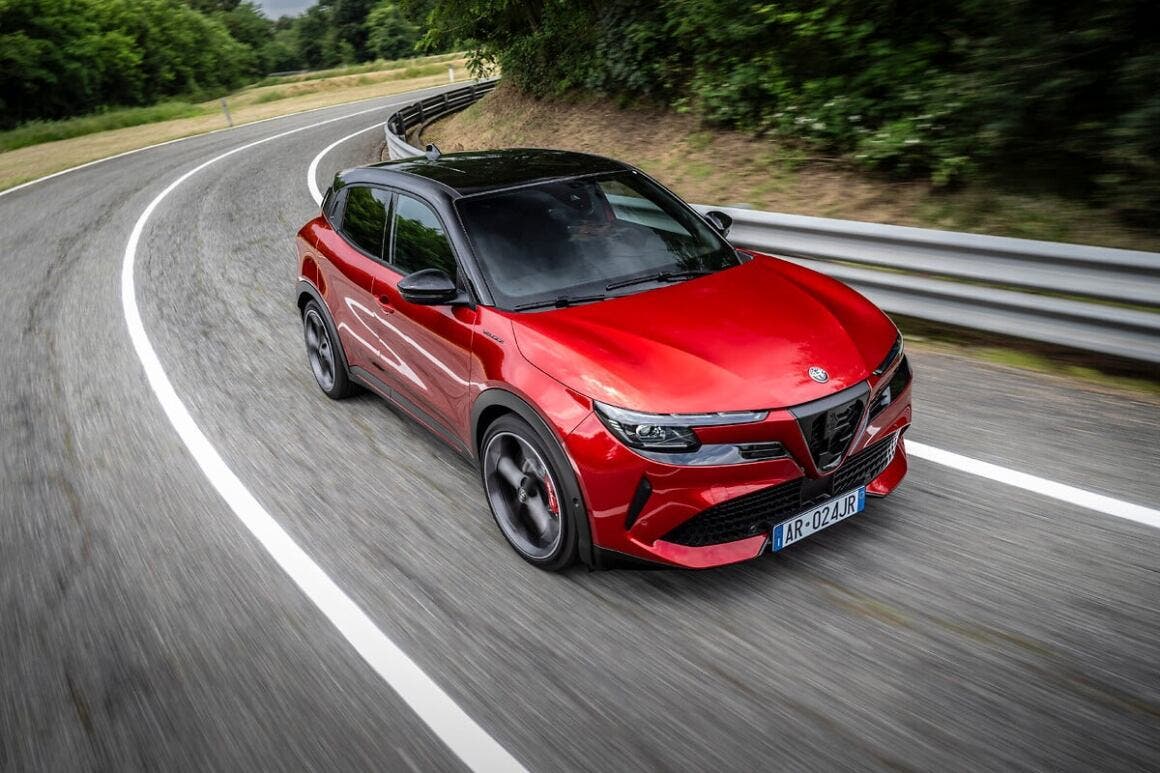In Jean-Philippe Imparato‘s initial forecasts, the former CEO of Alfa Romeo, the new Junior was meant to attract MiTo and Giulietta customers, targeting a sales range of 50,000-70,000 units produced annually. In short, the new Junior has the task of representing a strategic model for the brand before the arrival of new generations of Stelvio and Giulia expected in the coming years.
Although the new Alfa Romeo Junior attracted numerous criticisms, from the name change to its debut, today the first data seems to contradict the initial negative comments, pointing to more than comforting results. At the center of the compromises proposed by this new B-SUV, which for the first time introduces an electric model in the range, there are precise commercial needs that could benefit Alfa Romeo‘s relaunch. Compromises that, according to those who have tested it, seem to have guaranteed road behavior in line with the dynamics of a true Alfa Romeo, thanks to the fine-tuning work done by technicians on the shared CMP platform.
The data from the first months of the Alfa Romeo Junior’s market arrival is encouraging

When comparing the data produced so far by the Alfa Romeo Junior in terms of sales, the gap with the criticisms appears significant. Until the end of November last year, about three months after the start of sales, the Alfa Romeo Junior registered 1,800 units in Italy, with hybrid variants accounting for 87% of the total, or 1,564 Hybrid Juniors sold.
Looking at November of this year, the first month to consider for Junior sales since its commercial launch (excluding demonstration plates registered at the start), the new Alfa Romeo Junior totaled 1,104 total registrations in Italy. Of the 2,479 vehicles registered in November, it was the best-selling Alfa Romeo of the month, positioning ahead of the Tonale (877 units), Stelvio (537 registrations), and Giulia (99 registrations). In the ranking of the 50 most registered vehicles in Italy in November 2024, it placed 29th, ten positions ahead of the Alfa Romeo Tonale.
Looking at its segment and main competitors, the Alfa Romeo Junior outperformed the Fiat 600 (993 units registered) and the Nissan Juke (948 plates). Junior‘s figures aren’t far from the Peugeot 2008, which totaled 1,473 registrations in November, nor from the Toyota C-HR with 1,567 units registered. A bit further ahead are Junior‘s current main competitors, which can count on a more structured market presence: Volkswagen T-Cross registered 2,172 units, Ford Puma 2,451 units, Renault Captur 2,729 units, while the “sister” Jeep Avenger registered 3,830 vehicles, placing fourth among the best-selling cars in Italy in November. Considering that the Alfa Romeo Junior belongs to a more premium segment focused on dynamism and sportiness, the November figures appear encouraging and indicative of a new year that could start under the best auspices.

Looking at European data, by the end of October (latest available European market data), the Alfa Romeo Junior sold 1,656 units; this figure is part of over 14,000 units already registered since the start of commercialization until the end of October. The largest percentage of the overall figure relates to Juniors sold in Italy, followed by France, Germany, and Spain; in France, one would have to go back to 2011 with the Alfa Romeo Giulietta to find better overall orders compared to the current Junior. At this rate, the Alfa Romeo Junior could surpass the Alfa Romeo Stelvio and Giulia in the short term, as they have so far totaled 9,259 and 3,527 registrations respectively across Europe.

